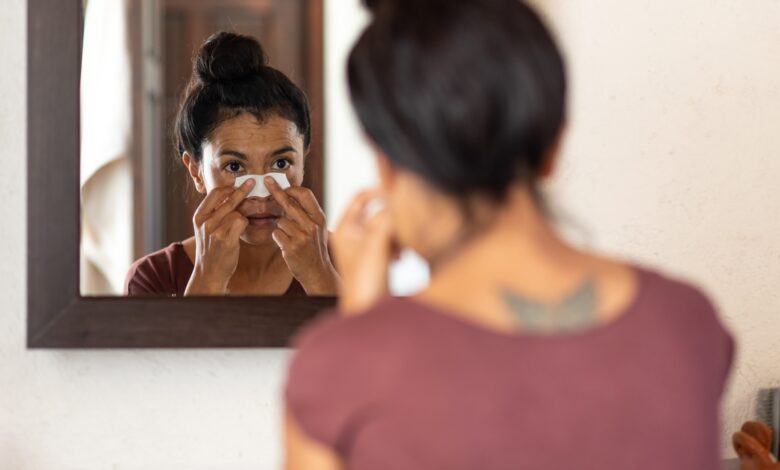15 Best Products for Blackheads, According to Dermatologists 2024

-
15/20
Dermaflash Dermapore Ultrasonic Pore Extractor
Dermatologists are divided on the use of at-home extraction tools like the Dermapore+, which uses ultrasonic waves and a metal skin spatula to coax out clogs. Critics caution the instant blackhead removal comes with the risk of damaging skin, but fans love that it can clear stubbornly clogged pores almost instantly. “I’ve been getting facials since I was a tween (my mom was a hair stylist so I had easy access in the salon) and I’ve never, in all of my life, experienced a painless extraction before an esthetician used this on me at the spa at the Waldorf Astoria in Orlando. I immediately bought it. I didn’t feel a thing–not even a pinch–and my skin looked so much better after, and my pores even appeared smaller,” says Brie Schwartz, director of commerce for Glamour and Teen Vogue.
Dr. Arora agrees it can be effective, “especially when used as part of a comprehensive skin care routine,” he says. “However, like any tool, it’s essential to use it correctly.” Using too much pressure can damage skin while over-using the extractor can actually backfire, stripping skin and kicking oil production into overdrive. Make sure to follow the manufacturer’s directions and “clean the device well in between uses so you aren’t reintroducing bacteria and impurities to the skin,” says Dr. Mraz.
- Especially good for: Deep exfoliation that won’t strip skin
- Pros: Instant pore-clearing results
- Cons: Can cause damage with improper use
-
What are blackheads, exactly?
“Blackheads are a common type of acne known as ‘open comedones’,” says Dr. Arora. Contrary to popular belief, these dark spots aren’t dirt but sebum (aka oil) and skin cells trapped in your pores. “When these clogged pores are exposed to the air, the melanin in the sebum oxidizes and turns black, hence the name blackheads,” explains Dr. Arora.
Blackheads start out the same way as other types of acne. “Each pore on the surface of our skin is a doorway into a deeper canal called a follicle. Within each follicle is a hair and oil, or sebaceous, gland,” says Dr. Mraz. If dead skin cells and oil are allowed to collect here, it forms a bump called a comedo. If the skin over these comedones remains closed, you get a classic pimple—whiteheads, pustular acne, or cystic acne, Dr. Mraz explains. If there is no skin covering the comedo, you get a blackhead.


